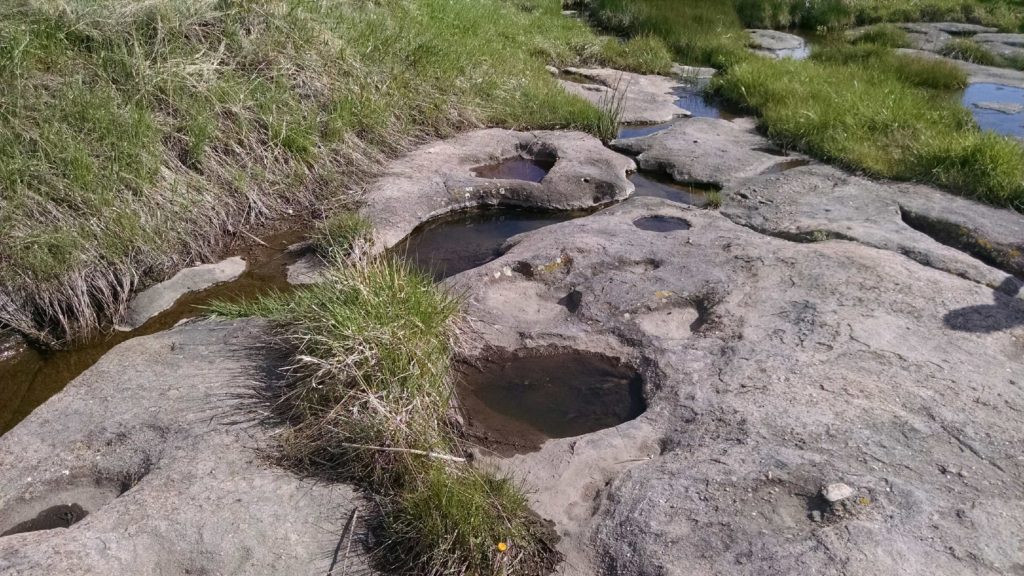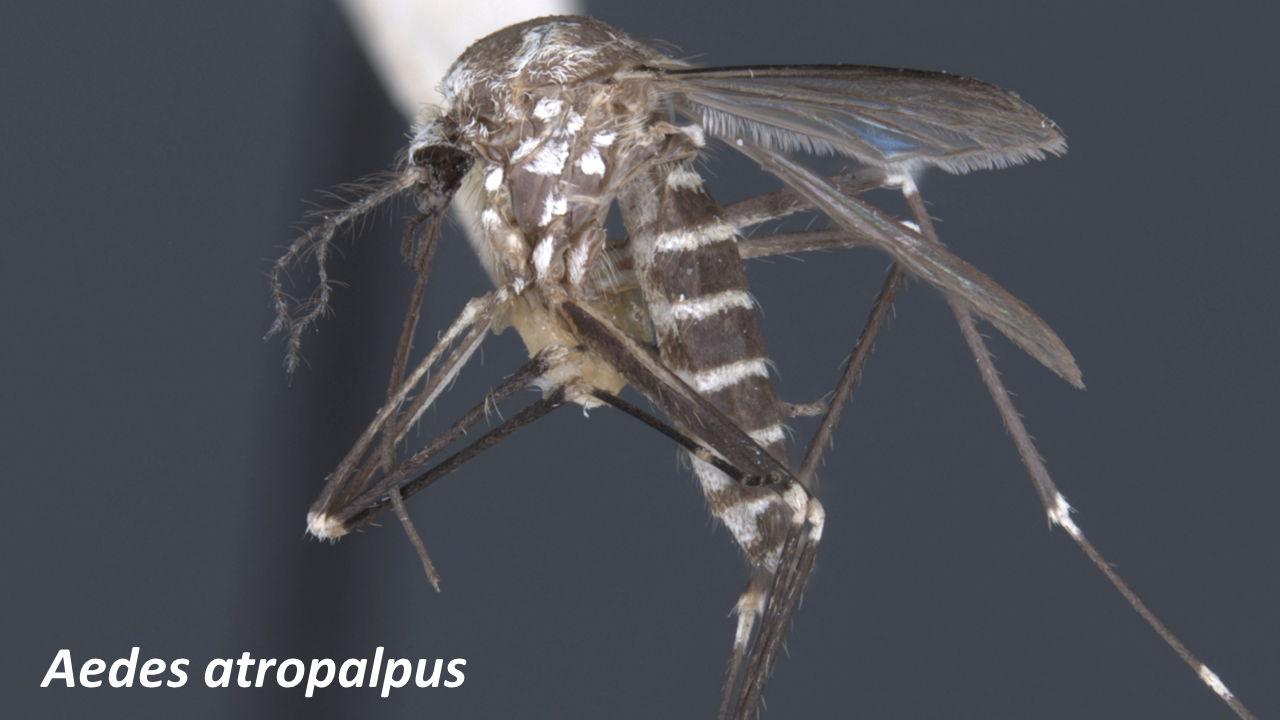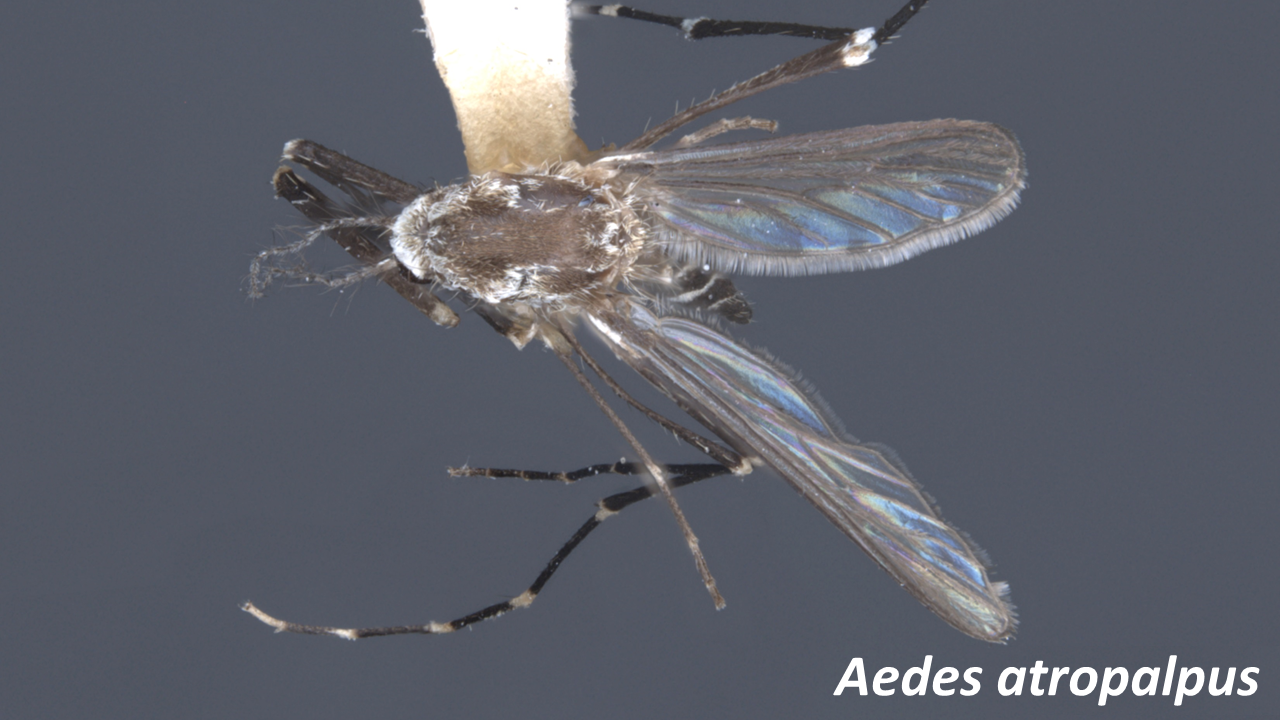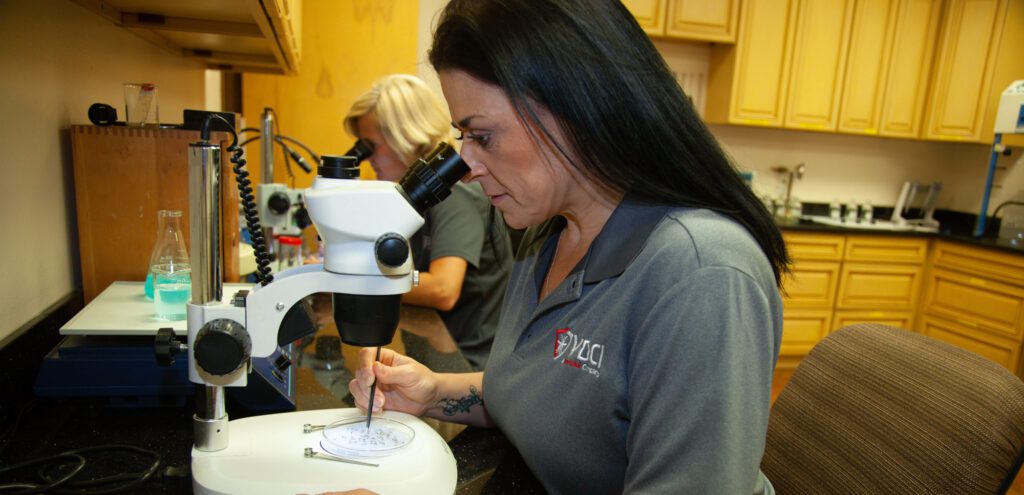Exploring Aedes epactius and Aedes atropalpus
April showers bring…mosquitoes?
Yes, all that spring rain that makes our gardens bloom with May flowers also supplies the water necessary to hatch the first round of this season’s mosquito eggs that have been dormant over the winter. While we tend to think of mosquito larvae as swamp insects, some occur in much smaller pools, created by springtime rains and stream overflows on rocky surfaces.

Two species of North American mosquitoes, Aedes atropalpus and Aedes epactius, are adapted to survive in rock pools – small depressions formed in stone that can hold water long enough for these insects to develop from egg to adult. Once considered to be just variations of the same species, taxonomists (scientists that deal with classification and naming of species) have found enough differences between them to justify the separation into two species. There is even some genetic evidence suggesting that there may be four distinct forms rather than two – the study of taxonomy is ever-changing as new revolutionary technologies, such as genetic analysis, are introduced. Such “revolutionary change” in science is not a new phenomenon – the introduction of relatively lower cost and more powerful microscopes in the 19th century created a similar revolution in the taxonomic study of insects, giving researchers the ability to see characters that were once considered too small to accurately distinguish. But I digress…
 Adults of both rock pool mosquito species have primarily black-scaled bodies with distinct white bands on the base of each abdominal segment, and white banding on either side of the leg joints. The two species differ only subtly in details that only a nerdy entomologist would notice while looking at them under a microscope – the distance between their eyes, the relative proportion of black to white scales on the femur of the hind legs, and the presence or absence of bristly hairs on the back of the thorax. Differences between the larvae are even more difficult to distinguish, including the number of spines, known as comb scales, which adorn the end of the abdomen.
Adults of both rock pool mosquito species have primarily black-scaled bodies with distinct white bands on the base of each abdominal segment, and white banding on either side of the leg joints. The two species differ only subtly in details that only a nerdy entomologist would notice while looking at them under a microscope – the distance between their eyes, the relative proportion of black to white scales on the femur of the hind legs, and the presence or absence of bristly hairs on the back of the thorax. Differences between the larvae are even more difficult to distinguish, including the number of spines, known as comb scales, which adorn the end of the abdomen.
Both species are adapted to life in an uncommon and challenging habitat – rock pools. These small water bodies can dry up quickly, requiring a short larval development in order to become adults before their watery home is gone. These pools also undergo huge temperature fluctuations especially in pools that are openly exposed to midday sunshine. As they dry up, the salts and minerals in the pool concentrate, creating a situation that is toxic to most other small animals, limiting the competition these mosquitoes may face for the limited resources of a rock pool habitat. Mid-season, they may lay their eggs directly on the water’s surface, whereas in late season they attach them firmly to the rock surface for overwintering. The eggs are resistant to desiccation and freezing, waiting to hatch until the pools are filled by the first warm water of spring rains or from stream overflow.
The Western rock pool mosquito, Aedes epactius, is found in the southwestern USA from Utah, Colorado, Kansas, and Missouri, south into Central America. Aedes atropalpus, the Eastern rock pool mosquito, occurs historically along the east coast of North America from northeastern Canada, south to Georgia and Alabama, and westward to the Mississippi River. I say “historically” because their range is apparently expanding.
 Some rock pool mosquitoes have found man-made containers, especially water-filled used tires, to be an adequate substitute for a rock pool. This adaptation to life in tires has allowed them to spread outside of their normal rocky range, including being found as far away as Europe! Yes, invasions are not just one-way into the USA, as some of our species also find their way into other countries. Aedes atropalpus was found in Italy in 1990, suspected to have entered the country in tires imported from North America, and has since been found in France and the Netherlands as well.
Some rock pool mosquitoes have found man-made containers, especially water-filled used tires, to be an adequate substitute for a rock pool. This adaptation to life in tires has allowed them to spread outside of their normal rocky range, including being found as far away as Europe! Yes, invasions are not just one-way into the USA, as some of our species also find their way into other countries. Aedes atropalpus was found in Italy in 1990, suspected to have entered the country in tires imported from North America, and has since been found in France and the Netherlands as well.
Aedes epactius has been described as an avid blood feeder, while Aedes atropalpus is sometimes autogenous – able to produce its first batch of eggs without requiring a blood meal as long as they were able to obtain sufficient nutrition during their larval development. After the first eggs, they need to obtain blood for future batches, but rarely travel far from the rock pools where they were born, hence being a biting nuisance only to humans that venture near those places.
Last October was unusually warm with occasional showers in my neighborhood, and we encountered some rock pool mosquito larvae along a nearby rocky stream, long after most mosquitoes had disappeared for the winter. I do not know if they had enough time to pupate, emerge as adults, mate, and successfully squeeze out one more generation of eggs before the snow came, but it was yet another example of how well adapted these mosquitoes are to life under conditions that are quite extreme, even by mosquito standards.

An important component of any successful Integrated Mosquito Management (IMM) program is mosquito identification. Should you have any questions regarding mosquito identification, Vector Disease Control International (VDCI) is always available at whatever level of assistance you desire.
Contact Us to Learn More About Effective Mosquito Management Strategies:
 Since 1992, Vector Disease Control International (VDCI) has taken pride in providing municipalities, mosquito abatement districts, industrial sites, planned communities, homeowners associations, and golf courses with the tools they need to run effective mosquito control programs. We are determined to protect the public health of the communities in which we operate. Our mosquito control professionals have over 100 years of combined experience in the field of public health, specifically vector disease control. We strive to provide the most effective and scientifically sound mosquito surveillance and control programs possible based on an Integrated Mosquito Management approach recommended by the American Mosquito Control Association (AMCA) and Centers for Disease Control and Prevention (CDC). VDCI is the only company in the country that can manage all aspects of an integrated mosquito management program, from surveillance to disease testing to aerial application in emergency situations.
Since 1992, Vector Disease Control International (VDCI) has taken pride in providing municipalities, mosquito abatement districts, industrial sites, planned communities, homeowners associations, and golf courses with the tools they need to run effective mosquito control programs. We are determined to protect the public health of the communities in which we operate. Our mosquito control professionals have over 100 years of combined experience in the field of public health, specifically vector disease control. We strive to provide the most effective and scientifically sound mosquito surveillance and control programs possible based on an Integrated Mosquito Management approach recommended by the American Mosquito Control Association (AMCA) and Centers for Disease Control and Prevention (CDC). VDCI is the only company in the country that can manage all aspects of an integrated mosquito management program, from surveillance to disease testing to aerial application in emergency situations.

